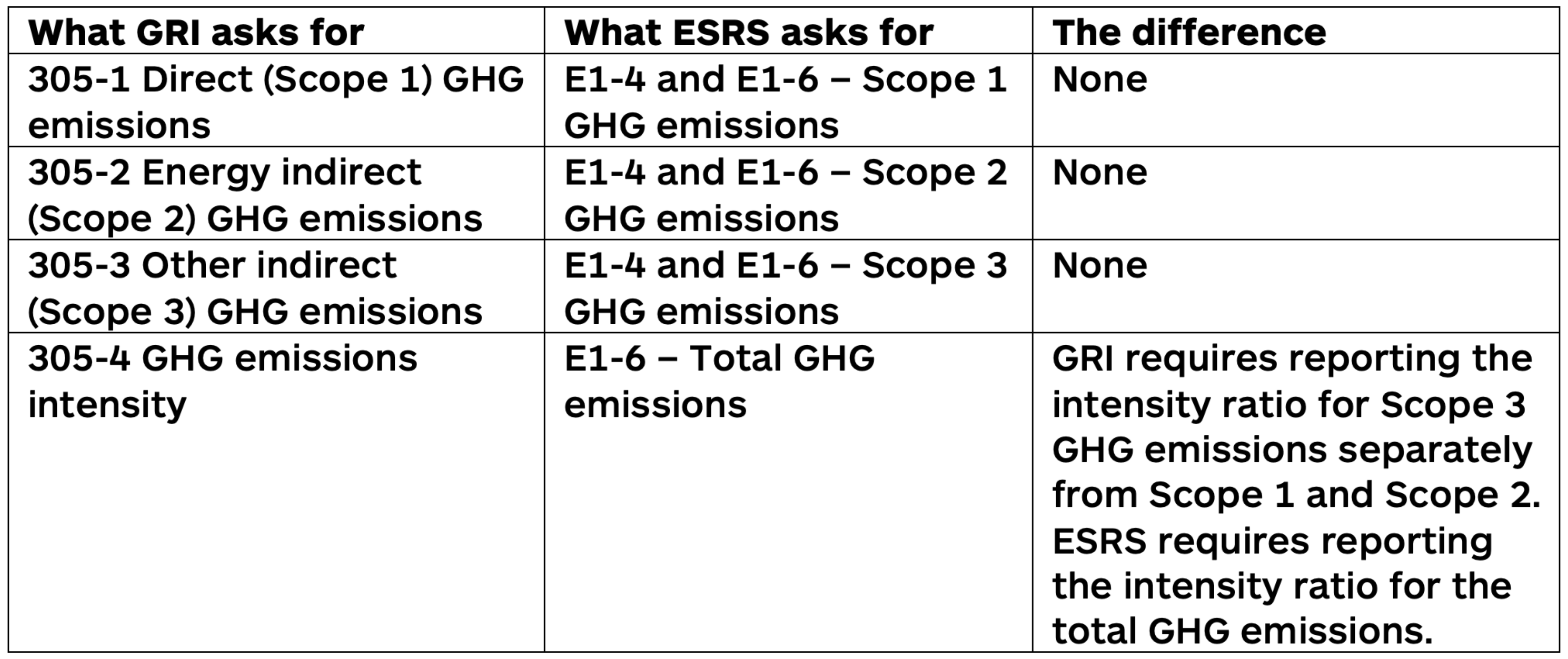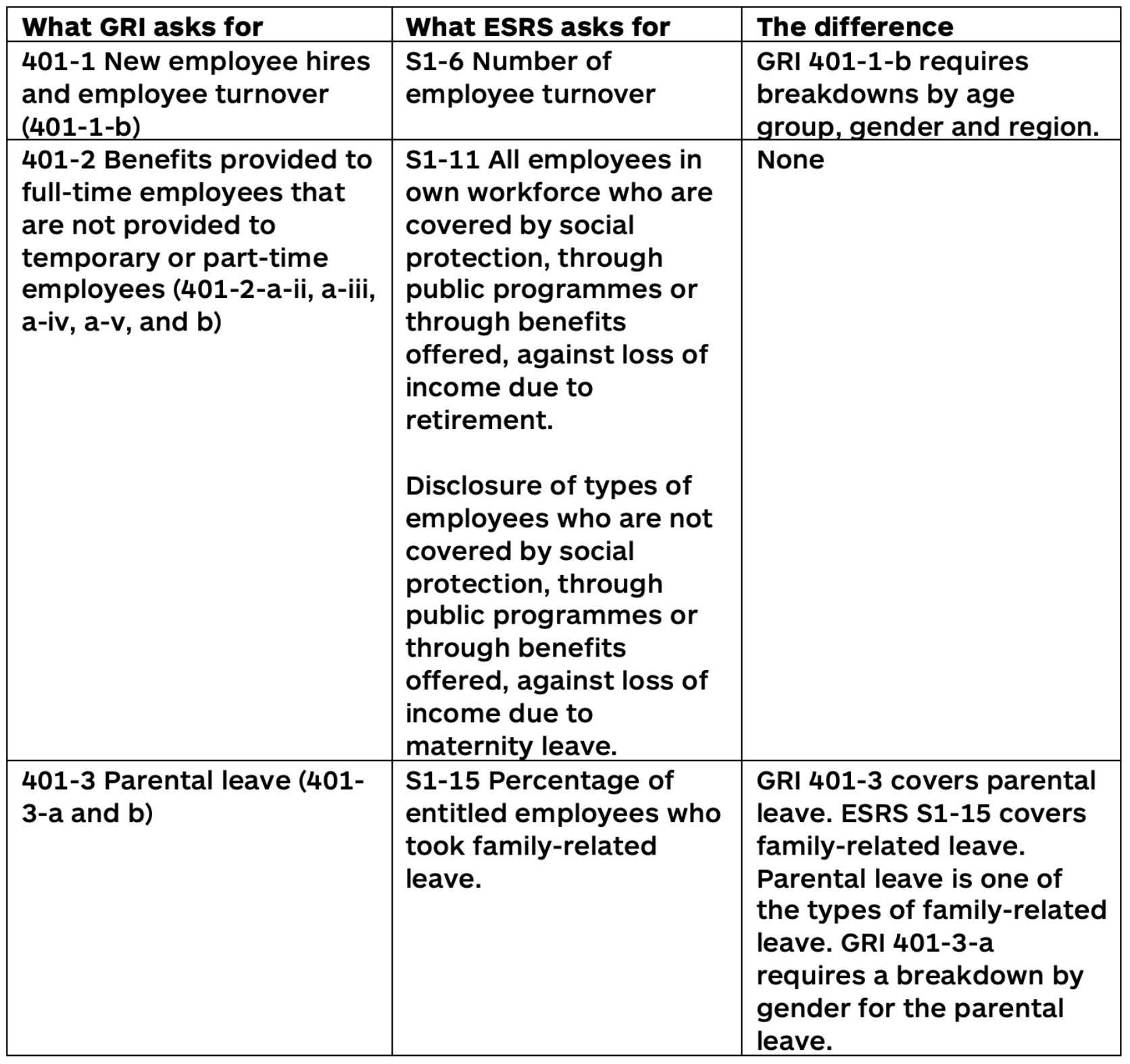For companies that are already reporting in accordance with GRI Standards, GRI reporting can be used as leverage to navigate the transition. This is because GRI has actively collaborated with the European Financial Reporting Advisory Group (EFRAG) to develop the ESRS with the aim to ensure interoperability between the two and reduce reporting burdens for companies.
For example, the ESRS is now using the same definition of impact materiality as GRI. This means the ESRS’s and GRI’s definitions, concepts and disclosures on impacts are either fully or closely aligned.
Let’s take a closer look at how GRI can help meet the ESRS requirements, using the examples of emissions and employment data.
Emissions
Both ESRS and GRI require companies to report on their greenhouse gas (GHG) emissions. This includes direct emissions (Scope 1), indirect emissions from purchased electricity (Scope 2) and, in many cases, other indirect emissions (Scope 3) that occur in the company’s value chain.
The way the two standards require GHG intensity ratios differs:
- GRI requires reporting the intensity ratio for Scope 3 GHG emissions separately from Scope 1 and Scope 2 intensity ratios.
- ESRS requires reporting the intensity ratio for the total GHG emissions.
 Please note: This data is based on the prefinal draft which is subject to approval from EFRAG SRB and still subject to change.
Please note: This data is based on the prefinal draft which is subject to approval from EFRAG SRB and still subject to change.
Employment
Both frameworks require companies to report on their workforce numbers, including breakdowns by employment type (full-time, part-time), contract type (permanent, temporary) and, in some cases, by region or significant locations of operation. This provides a snapshot of the organisation’s size and the scale of its employment practices.
 Please note: This data is based on the prefinal draft which is subject to approval from EFRAG SRB and still subject to change.
Please note: This data is based on the prefinal draft which is subject to approval from EFRAG SRB and still subject to change.
Preparing for the future
With more and more companies falling in scope with this new regulation, there is a predicted ‘ESRS halo effect’ emerging on the horizon of the sustainability reporting landscape. Companies that are not reporting in line with the detail-driven ESRS will see a tide of robust sustainability reporting rise around them and will need to keep up – and GRI reporting is a suitable way to do just that. Therefore, there is a big encouragement from EFRAG to adopt the framework to help meet ESRS requirements.
But whether in scope of the CSRD or not, GRI is a strong tool for companies to use to focus their reporting and ensure a company has all the information it needs to make a change. For example, GRI 3-3 is essentially a guidebook to managing sustainability topics well. And if the company does not have the answers or resources to fill out requirements, then it helps to identify focus areas to fill in the gaps.
Whether you are a first-time reporter or have been producing a sustainability report for years, new ESG frameworks and regulations are changing the way companies need to think about and report on sustainability. If you need help thinking about how you can prepare, please get in touch with sarah.roper@luminous.co.uk
.png?width=1200&name=MicrosoftTeams-image%20(41).png)



